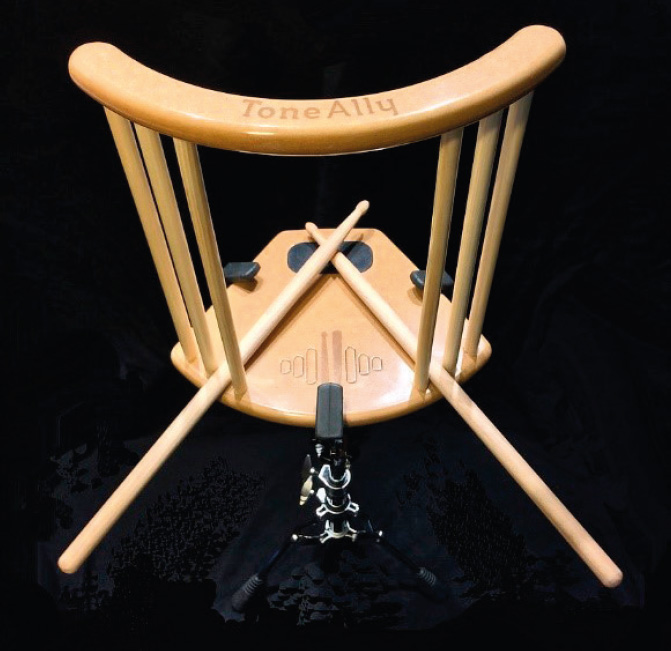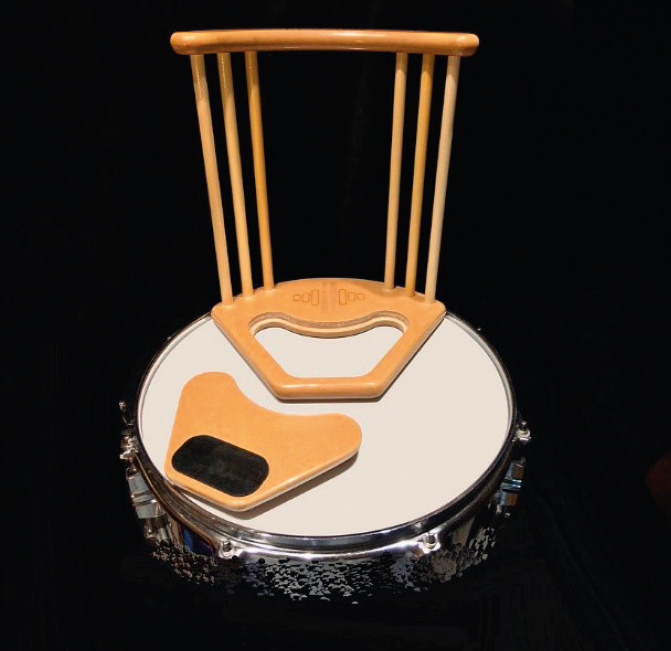
It's hard to leave an interview with Jarrow-based Tony McNally and not feel enthused.
McNally is the inventor of ToneAlly, a percussion teaching tool which has been a genuine success story since its 2017 launch at the UK Drum Show in Manchester. It has rapidly gained worldwide appeal, selling from the north-east of England to mainland Europe, North America, Mexico, Russia and Australia. Major drumming schools in Switzerland, France and Poland have bought the strikingly simple device, with more queueing up to purchase the teaching tool. Such is its success, it has even been endorsed by top player Dom Famularo, drumming's global ambassador, who was ‘very impressed’.
‘This is a fun idea for student to learn precise movement in all hand positions,’ says Famularo. ‘It guides you to be aware of muscle memory for your hands and teaches accuracy. I wish I had this when I was first learning.’ Famularo is also planning a trip to the UK, visiting Newcastle, and has offered to showcase the product to British buyers.
ToneAlly has also been endorsed by a number of working drummers. Seamus O’Doherty of The Hustle describes ToneAlly as ‘brilliant’, adding: ‘I can say with absolute satisfaction I've noticed a difference already in my stick control and rudiments.’ Rhythm magazine's best drum clinician of 2017, Craig Blundell, says that ToneAlly is: ‘Good for your discipline, a great way to channel your stick heights and line of stroke.’
Others who are enthused by the product include Thomas Lang, who was named best drum clinician by Modern Drummer Magazine in the USA; Mel Gaynor from Simple Minds; and the legendary Steve White, who has performed with Paul Weller, The Who and Oasis.
Far from faint praise, then.

ToneAlly Design 1
Can't be beat
McNally was formerly head of music for Sunderland local education authority and is one of a handful of educators in the UK who holds Advanced Skills Teacher status. He comes from a musical family. ‘I was playing three gigs a week, aged eight,’ he says. ‘It was good to be part of a family act performing in working men's clubs.’
Before X Factor and Britain's Got Talent found their way onto the airwaves, he played with his family band, Mike Mason and the Little People, on the television show Opportunity Knocks and won by way of the audience ‘clapometer’.
He went on to release his fist vinyl record aged 12 and won a national award in 1990 as best undiscovered British drummer, to date the only winner from north-east England. ‘It was when I was preparing for that drum solo competition 28 years ago that I formed my first designs,’ says McNally. ‘I remember sitting in front of a mirror to get my technique perfect and that's when the idea came to me. I made notes and thought my idea was great. And then I just sat on it.’
However, just over two years ago he took legal advice and applied for a patent. ‘It was a heavy outlay but it was the right thing to do,’ he says. ‘I've also registered the design for the whole of the EU.
I produced an earlier prototype in 2016 in my back garden. That won an award as the finest percussion tool. What I wanted to do was help people play. All the best players in the world have an almost perfect technique.’
So is McNally plugging a gap in the market? ‘Not really,’ he says, ‘but there's nothing else like it. It really is beneficial for players. It has a tiny pad that shows just how accurate you can be as a player.’
The kit
The product features a unique vertical structure unlike the multitude of traditional practice pads. Each ToneAlly – tone referring to sound and timbre, ally to the direction of the stick – has four separate ‘allys’, or alleys, to accommodate various hand grip positions such as ‘matched’ and ‘traditional’ for both right and left-handed players. The trajectory of the stick is taken care of by the device so a student can start using the correct muscle groups straight away. As a result, a good technique which once took years to develop can be learned almost immediately.
The playing surface is a mere 80 by 40 millimetres and is made from neoprene rubber, enabling a player to hear and feel every hit. The modest size of the strike pad gives a clear indication of how accurate ToneAlly trains the player to be.
There are two designs, named Design 1 and Design 5. Design 1 has a solid base, is totally portable, stands free on a desk or can be clamped to a stand, and sits on any standard-size snare drum. Design 5 features a removable strike pad allowing the tip of the stick to strike the drumhead.
Tonally shows the potential to reach students who would otherwise find drumming inaccessible, with McNally talking to the Royal National Institute of Blind People, which has expressed an interest in testing out the product for use in schools. ‘There's also Roddy, a young student who has cerebral palsy,’ he says. ‘He was put off playing by experts, physiotherapists and occupational therapists, who all told him he couldn't do it. Since he's been using ToneAlly, he has really turned the corner. He is so confident. And the essence of playing is to do with muscle memory. My design gets straight to the nitty gritty of playing.’

ToneAlly Design 5








